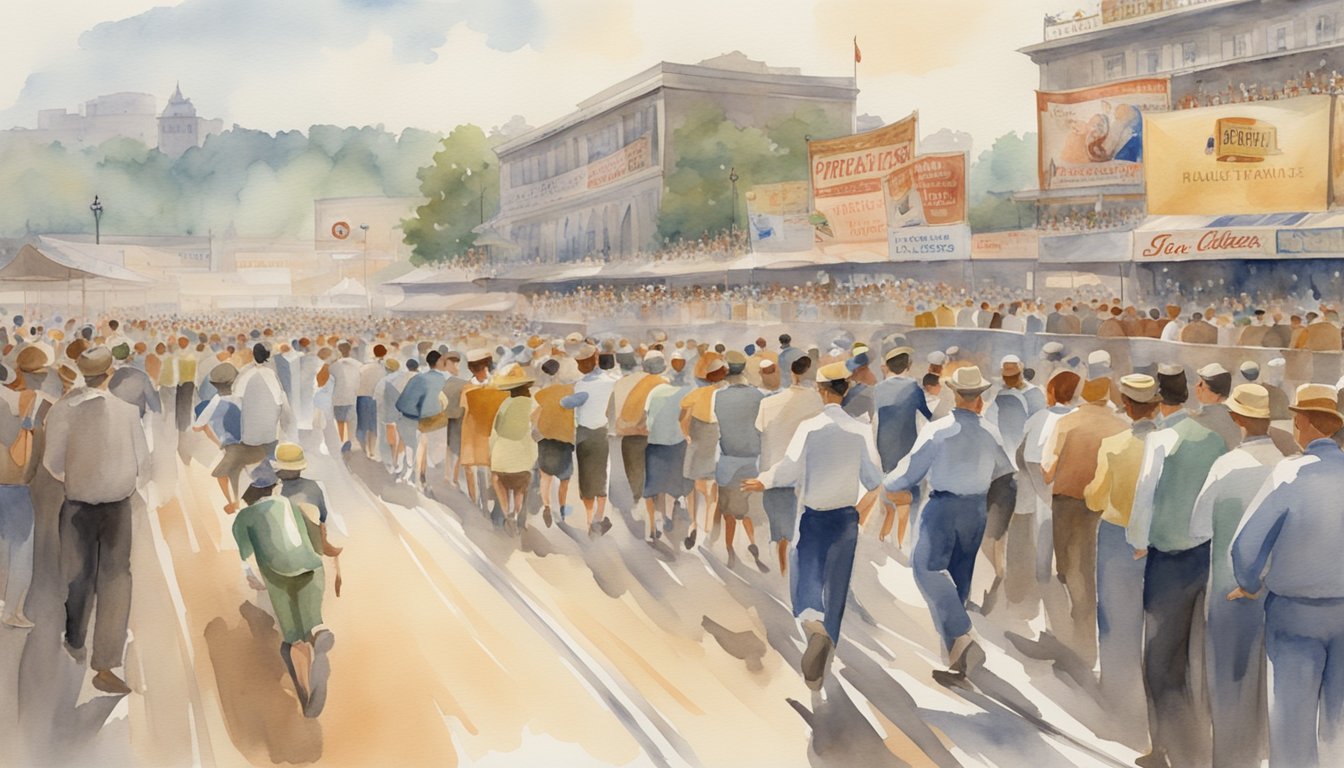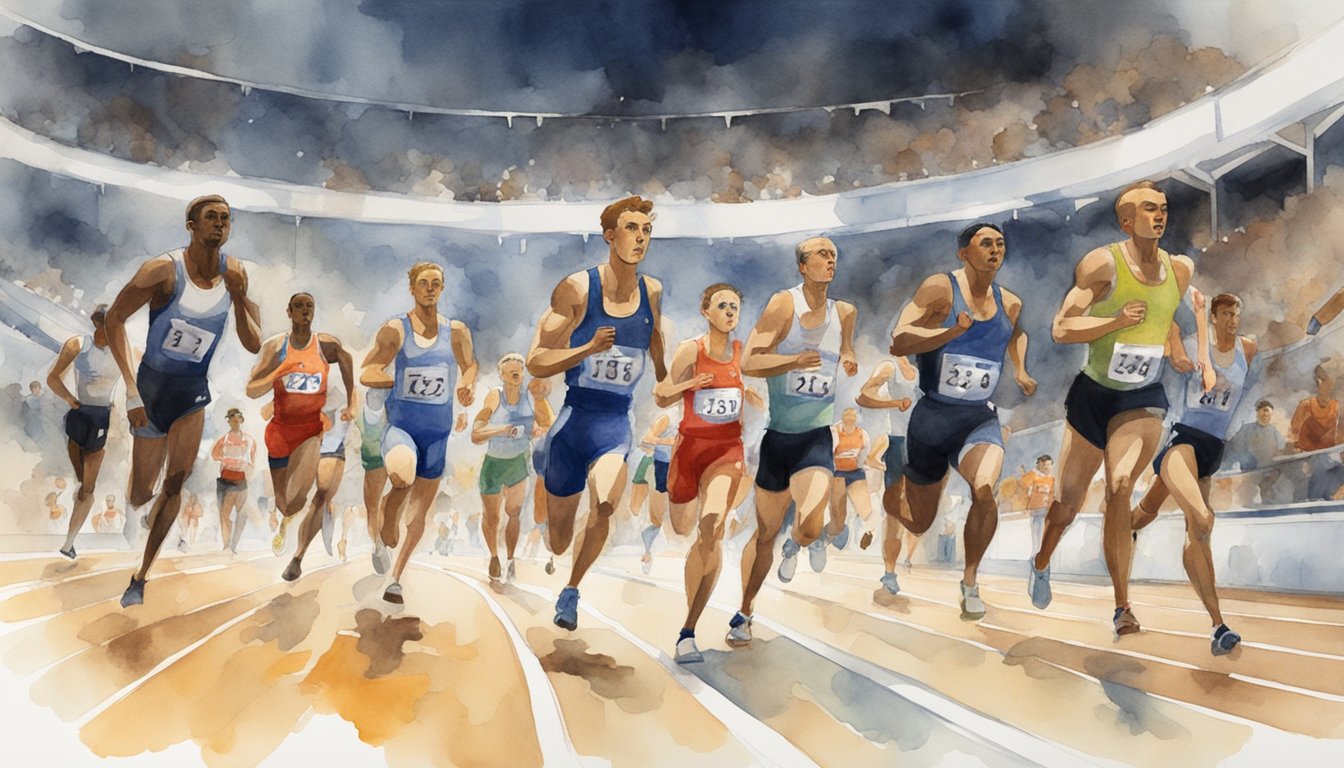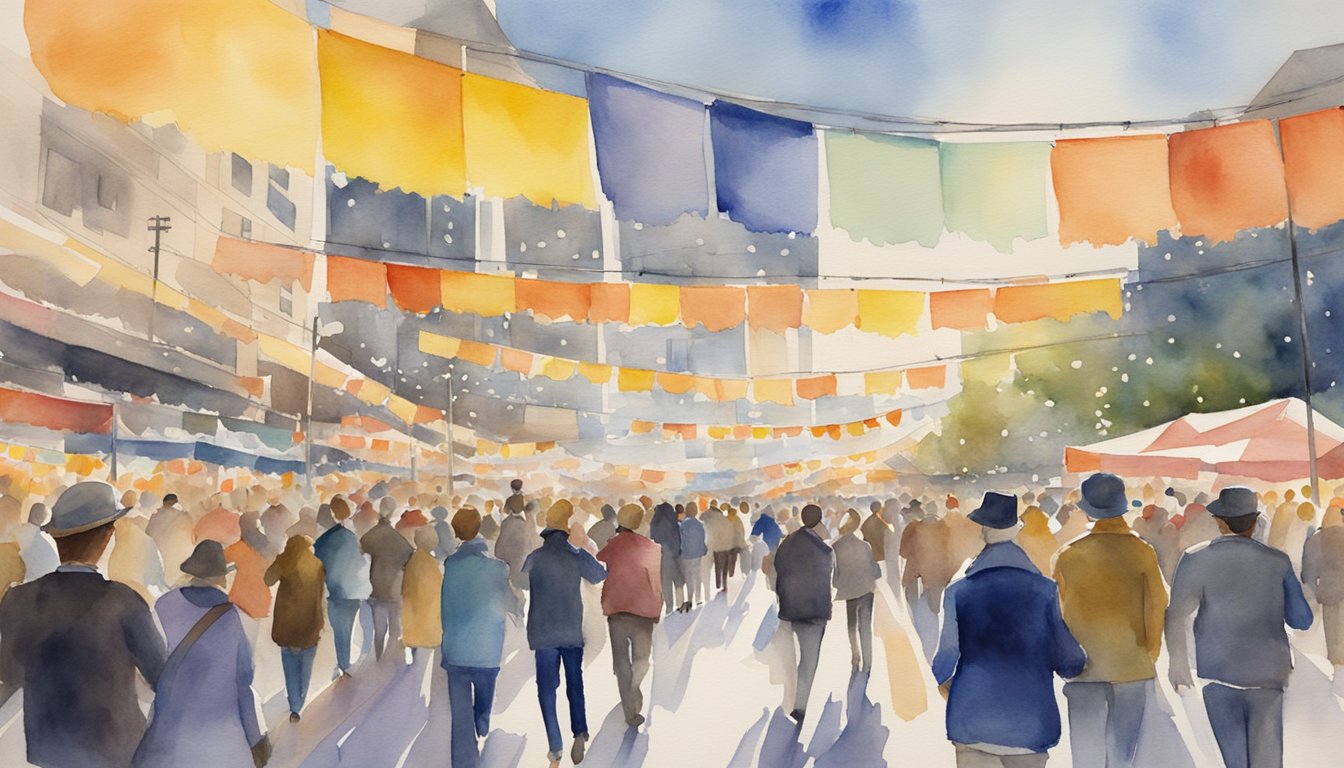During the 19th century, six-day pedestrian races captivated audiences across the globe.
These grueling events pushed athletes to their physical and mental limits, with participants walking or running for up to six days straight.
Thousands of spectators would gather to witness these competitions, making pedestrianism one of the most popular sports of its time.

The origins of six-day races can be traced back to the feats of early athletes like Foster Powell, who famously walked 400 miles in six days in the late 18th century.
Over time, these races evolved into major spectator events, drawing crowds eager to see athletes push their endurance to new heights.
Events like the Six-Day Race in London in 1877 highlight the competitive spirit and the cultural significance of these races.
Though the popularity of six-day races declined with the rise of cycling in the late 19th century, their impact on sports culture remains.
Modern-day walking and long-distance pedestrian challenges owe much to the endurance and determination showcased in these early races.
This article will explore the history, evolution, and lasting legacy of six-day pedestrian races.
Key Takeaways
- Six-day races were popular endurance events in the 19th century.
- Athletes showcased remarkable physical and mental endurance.
- Modern walking races are influenced by these historic events.
Historical Context and Evolution

The six-day pedestrian races have a rich history that dates back to the 18th century.
From its origins in England to its peak popularity in the 19th century, notable figures like Foster Powell and Edward Payson Weston have greatly influenced this sport.
Origins of Pedestrianism
Pedestrianism began in England during the 18th century.
The central figure in its early history was Foster Powell, often considered the “Father of the Six-Day Race.” Powell’s feats brought attention to walking and running over extended periods, setting the foundation for the sport.
Early competitions focused on endurance and required participants to walk or run for several consecutive days.
This laid the groundwork for what would become more formalized six-day races.
These events were not just about speed but stamina and mental fortitude.
Popularity in the 19th Century
The sport gained immense popularity in the 19th century, especially in America and England.
Large crowds gathered to watch these endurance contests, often held in arenas like Madison Square Garden in New York.
By the late 19th and early 20th centuries, six-day races had become major events that captivated the public.
This period, often referred to as the Golden Age of Pedestrianism, saw a surge in both participants and spectators.
These races became a form of popular entertainment and drew significant attention from the media of the time.
Key Figures and Records
Several key figures stand out in the history of six-day pedestrian races.
Foster Powell, with his pioneering efforts, set the stage in the 18th century.
In the 19th century, Edward Payson Weston became another prominent figure, known for his remarkable endurance and winning several major pedestrian competitions.
Records were constantly being broken as athletes pushed the limits of human endurance.
These individuals not only competed for personal glory but also helped cement pedestrianism as a respected sport.
Understanding the achievements and contributions of these historical figures provides insight into the sport’s evolution and enduring appeal in both the British and American contexts.
Cultural and Social Impact

Six-day pedestrian races had a significant cultural and social impact, influencing media coverage, public engagement, and even financial betting markets.
The sport was particularly popular in urban areas like New York City, drawing in large crowds and creating notable celebrity athletes.
Media Coverage and Publicity
In the late 19th century, six-day pedestrian races enjoyed widespread media coverage.
Newspapers like The New York Herald frequently reported on the events, helping to boost their popularity.
Madison Square Garden in New York City was a notable venue where these races were covered extensively.
These articles detailed the endurance feats of the athletes and kept the public informed about ongoing competitions, ensuring high levels of public interest and attendance.
Celebrity Athletes and Personalities
Certain athletes became celebrities in their own right.
Figures like Frank Hart and Daniel O’Leary gained widespread fame.
Their achievements were often highlighted in newspapers and magazines, and they were celebrated much like modern sports stars.
These athletes frequently shared their proper walking form and dietary habits, inspiring many fans to take up walking as a sport.
Their celebrity status was instrumental in bringing a larger audience to the events.
Societal Betting and Economics
Betting was a major component of six-day races.
Spectators often placed large sums of money on their favorite competitors.
This betting culture not only added a financial dimension to the sport but also increased its appeal.
The economic impact was substantial, with local businesses benefiting from the influx of visitors.
Vendors, accommodation providers, and entertainment venues saw increased revenue during race events, making six-day pedestrian races a significant economic activity in cities like New York.
Decline and Legacy

The decline of six-day pedestrian races began in the late 19th century.
Despite their disappearance, their legacy lives on through modern sports and historical preservation efforts.
Transition to Cycling and Other Sports
By the 1890s, six-day races in venues like Madison Square Garden saw less public interest.
Society’s focus shifted towards new forms of entertainment.
The six-day cycling races emerged in this period, replacing pedestrian races.
Cycling transformed into a major sport in Europe, especially in France and Germany.
These cycling events gained popularity due to their faster pace and technological advancements.
As interest in pedestrian races declined, other sports such as football and baseball gained prominence.
This transition marked a shift in social entertainment and athletic competition.
Modern Ultrarunning and Racewalking
While six-day pedestrian races faded, their endurance spirit influenced modern sports.
Events like ultrarunning and racewalking have roots in these historic races.
Ultrarunning events span days, with participants covering vast distances.
Racewalking became an official sport with regulated techniques and Olympic events showcasing its competitive nature.
These modern adaptations emphasize endurance and stamina, reflecting the legacy of six-day races.
Annual competitions and records set by athletes keep the history of long-distance walking alive.
Contemporary ultrarunning and racewalking continue the tradition of pushing human physical limits.
Preservation of Pedestrianism History
Efforts to preserve the history of pedestrianism highlight its cultural significance.
Historical societies and enthusiasts document the achievements and stories of past racers.
Venues like Madison Square Garden, which hosted iconic races, are remembered as centers of pedestrianism.
Books, articles, and online resources focus on the revival of pedestrianism.
They explore the sport’s impact on health and society.
These preservation efforts ensure that the contributions of early pedestrians are not forgotten.
Historical reenactments and commemorative events honor the legacy of six-day races and their influence on modern sports.


